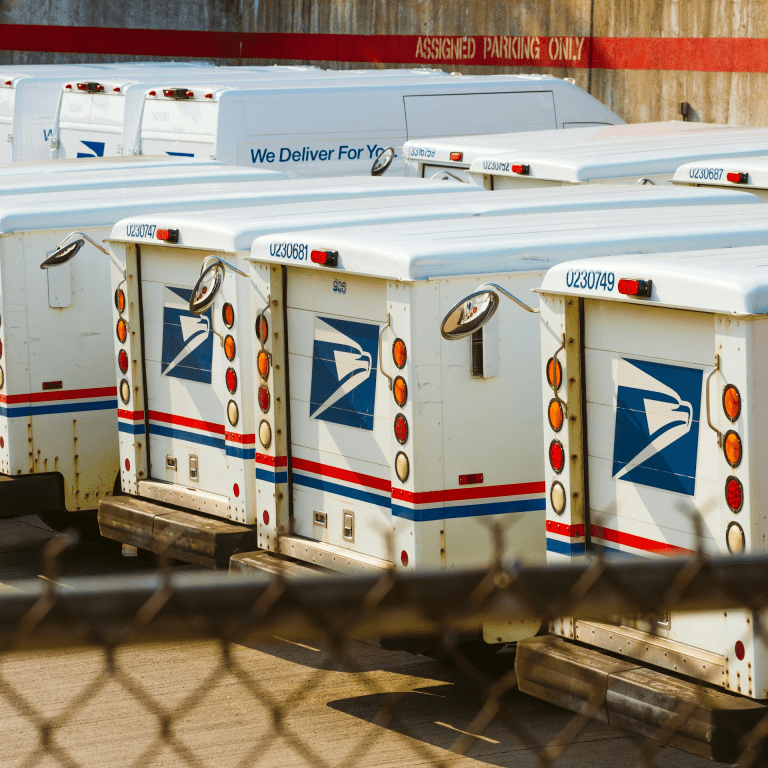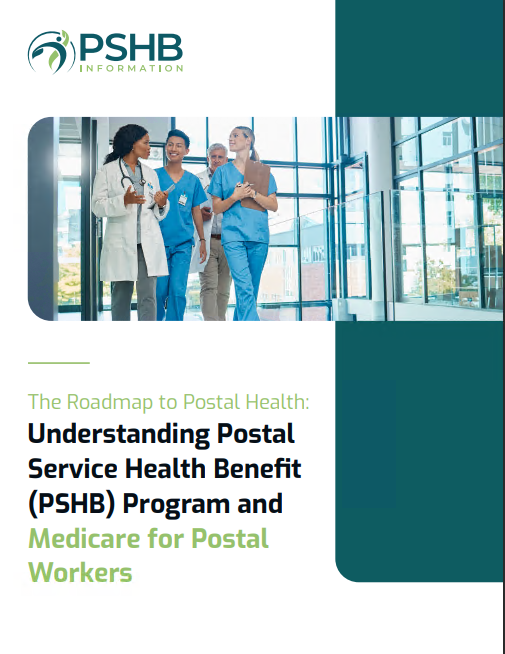Key Takeaways
-
The Postal Service Health Benefits (PSHB) program has replaced the Federal Employees Health Benefits (FEHB) system for USPS workers in 2025, creating a significant shift in healthcare coverage.
-
Understanding the new requirements, benefits, and timelines is crucial for making informed decisions about your health coverage.
What Makes the 2025 PSHB Transition So Significant?
If you’re a Postal Service worker or retiree, you’ve probably heard a lot of talk about the Postal Service Health Benefits (PSHB) program. This isn’t just another change—it’s a complete shift in how USPS employees and annuitants manage their healthcare. Starting in 2025, PSHB has taken over as the primary health insurance option for postal workers and their eligible family members. Here’s everything you need to know to stay ahead and make the best choices for you and your family.
The introduction of PSHB marks a significant step in tailoring health benefits specifically for USPS employees. The program aims to streamline options and provide comprehensive coverage while aligning with broader healthcare changes, such as Medicare integration. For many, this is an opportunity to access better benefits, but it also requires a proactive approach to understand and navigate the system effectively.
Who Needs to Pay Attention to the PSHB?
The PSHB affects:
-
Current USPS Employees: If you’re actively working for the Postal Service, your health insurance options have been restructured. Ensuring you select the right plan during Open Season or a Qualifying Life Event (QLE) is crucial.
-
Postal Retirees and Annuitants: Those who retired on or before January 1, 2025, must review their options carefully to ensure continued coverage. Staying informed about Medicare requirements is essential to avoid penalties.
-
Eligible Family Members: Spouses and dependents also fall under these changes, so it’s important to understand how their coverage might be impacted and how to coordinate benefits effectively.
Whether you fall into one of these categories or support someone who does, keeping up with PSHB updates ensures you maximize your benefits.
Key Dates You Should Know
-
January 1, 2025: The PSHB program officially started, marking the transition from FEHB to a USPS-specific system.
-
Open Season: From November 11 to December 13, 2024, you had the chance to select a plan. If you missed it, changes are only possible during Qualifying Life Events (QLEs) or future Open Seasons.
-
Medicare Enrollment Deadlines: Ensure you enroll in Medicare Part B if eligible to maintain PSHB coverage and avoid late penalties.
Missing these deadlines can lead to complications in coverage, so marking your calendar is essential.
What’s New Under PSHB?
1. Integration with Medicare
One of the biggest changes is the mandatory Medicare Part B enrollment for Medicare-eligible annuitants and their family members. This integration aims to reduce out-of-pocket costs and improve overall benefits.
-
If you retired on or before January 1, 2025, you may be exempt from this requirement, but you should still consider enrolling for enhanced coverage.
-
Medicare integration offers perks like waived deductibles, premium reimbursements in some cases, and better coordination of care.
2. Employer Group Waiver Plan (EGWP)
PSHB includes prescription drug coverage under an Employer Group Waiver Plan (EGWP), which works alongside Medicare Part D. This ensures you’re getting comprehensive pharmacy benefits with cost-sharing options.
-
Simplified prescription drug management reduces administrative burdens.
-
Coverage is designed to minimize out-of-pocket expenses, especially for high-cost medications.
3. Streamlined Plan Options
The PSHB program is tailored specifically for USPS workers, offering fewer but more relevant plan choices. This can make it easier to find a plan that matches your needs without being overwhelmed by options.
-
Simplified choices help you focus on coverage that fits your unique situation.
-
Plans are designed to cater to both active employees and retirees, ensuring comprehensive options.
How PSHB Impacts Your Wallet
Premiums and Government Contributions
The PSHB program retains the government’s significant contribution toward premiums, similar to FEHB. However, your share of premiums may vary depending on the plan you select.
-
Plans are structured to keep costs manageable while providing robust coverage.
-
Understanding your contribution levels helps you plan your budget effectively.
Cost-Saving Opportunities
If you’re eligible for Medicare, pairing it with PSHB can lead to substantial savings. For example, some plans offer:
-
Reduced premiums
-
Lower out-of-pocket costs
-
Prescription drug benefits coordinated through EGWP
Taking advantage of these savings requires proactive planning and coordination.
Coinsurance and Deductibles
Under PSHB, coinsurance rates and deductibles align with industry standards. For hospital stays and medical services, you’ll encounter costs similar to those in FEHB, but Medicare coordination often reduces these expenses significantly.
-
Coinsurance for services like hospital stays and skilled nursing facilities is manageable when combined with Medicare.
-
Deductibles may be waived or reduced depending on your plan and Medicare enrollment status.
What Happens If You Don’t Take Action?
Automatic Enrollment
If you were enrolled in FEHB as of 2024, you were automatically transitioned to a comparable PSHB plan. While this ensures continuity, it’s still wise to review your plan to ensure it meets your needs.
-
Automatic enrollment protects against gaps in coverage but doesn’t guarantee the best fit for your needs.
-
Reviewing your plan options annually is critical to optimizing your benefits.
Missing Key Deadlines
Failing to enroll in Medicare Part B when required could lead to penalties and gaps in coverage. Staying proactive is critical to avoid these costly mistakes.
-
Late enrollment penalties can be significant and long-lasting.
-
Ensure timely action to maintain uninterrupted access to healthcare.
Benefits Beyond Healthcare
Vision and Dental Coverage
Most PSHB plans continue to offer robust vision and dental benefits, ensuring comprehensive care beyond basic health needs.
-
Regular checkups and preventive care are often included.
-
Enhanced benefits make it easier to manage overall wellness.
Wellness Incentives
Many plans include wellness programs, such as discounts on gym memberships, smoking cessation programs, and annual checkups.
-
Wellness incentives encourage healthy living and reduce long-term healthcare costs.
-
Taking advantage of these programs can lead to significant lifestyle improvements.
How to Make the Most of PSHB
Review the Annual Notice of Change (ANOC)
Every year, your plan sends an ANOC detailing changes in premiums, benefits, and cost-sharing. Reviewing this document helps you stay informed and prepared.
-
Understand changes to avoid surprises in your healthcare costs.
-
Use this information to make adjustments during Open Season if necessary.
Compare Plans During Open Season
Even if you’re satisfied with your current plan, Open Season is the perfect time to compare options and see if you’re getting the best value.
-
Open Season allows you to adjust your plan to fit new circumstances.
-
Comparing plans ensures you’re not missing out on better benefits.
Leverage Medicare Enrollment Periods
If you’re newly eligible for Medicare, take advantage of enrollment periods to coordinate your coverage seamlessly with PSHB.
-
Timely Medicare enrollment optimizes your healthcare coverage.
-
Coordination reduces out-of-pocket costs and simplifies management.
FAQs About PSHB
What Is a Qualifying Life Event (QLE)?
A QLE includes events like marriage, divorce, the birth of a child, or retirement. These allow you to make changes to your health plan outside of Open Season.
-
Ensure you act promptly after a QLE to make necessary adjustments.
-
Keep documentation ready to streamline the process.
Are Retirees Automatically Enrolled in Medicare Part B?
No, you must actively enroll in Medicare Part B if you’re eligible. The PSHB program does not handle this for you.
-
Enrollment ensures access to integrated benefits and cost savings.
-
Missing enrollment deadlines can lead to coverage gaps.
How Does the EGWP Work?
The Employer Group Waiver Plan simplifies prescription drug coverage by coordinating with Medicare Part D, offering lower costs and fewer hassles.
-
EGWP streamlines drug coverage, reducing administrative challenges.
-
Coordinated benefits help manage high-cost medications effectively.
Stay Informed to Maximize Your Benefits
The transition to the Postal Service Health Benefits program is a major change, but it doesn’t have to be overwhelming. By staying informed, meeting deadlines, and taking full advantage of your benefits, you can ensure you’re getting the most out of this new system. Whether you’re an active employee, a retiree, or a family member, understanding these changes is the first step to maintaining excellent healthcare coverage.
-
Knowledge is your best tool for navigating this new system.
-
Make proactive decisions to secure your healthcare future.









